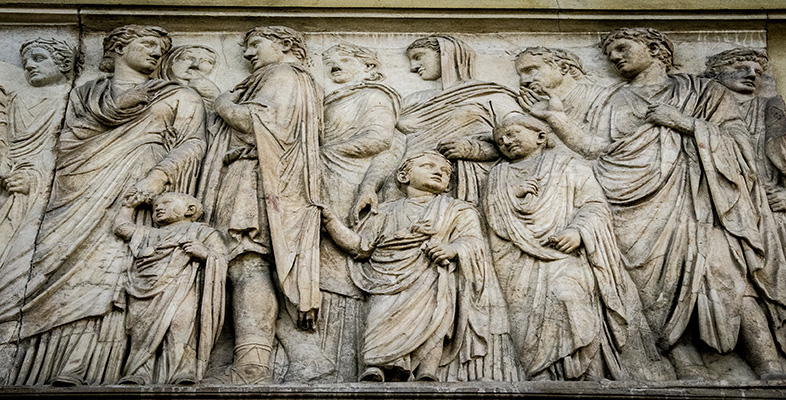3.2 Ancient places
In the previous section you have been studying time: now you need to move on to that other great regulator of human activity – place. You may already have a firm grip of the geography of the Mediterranean region and this will give you a head start, but as you will discover, places in the past were not the same as they are now.
The extent of the Greeks’ geographical knowledge of the world can be reconstructed from considering the regions and places mentioned by various authors, notably Herodotus (c.450 BCE). Later, in the Hellenistic and Roman periods, rather detailed descriptions of the earth's surface, including the concept of latitude and longitude, were developed in order to fix places in geographical space. If you read the OCCC entry for ‘geography’, you will soon see that the Greeks had quite complex ideas about the subject. However, this is not the place to go into such detail; for now, the important thing is to make sure that you acquire (or refresh) a knowledge of the geography of the Classical world. Knowing where places were, which places were near each other and which were distant, will enrich your exploration of the ancient world. You will be doing this largely through the study of maps, but a few introductory points need to be made before you start.
A first point is that the conformation of the earth’s surface has changed since antiquity. A clear example of change is in coastlines, caused either by rising or falling sea level, or by alluviation – where rivers wash material downstream leading to a filling of valley bottoms and the advance of the coastline into shallow sea areas. In most low-lying areas of the eastern Mediterranean, coastlines have changed as rivers have silted up and coastal lagoons have dried up. Some of this change has natural causes (e.g. earthquakes and volcanic eruptions), but human impact on the environment, particularly deforestation and intensive agriculture, often seems to have led to changes in the landscape. A consequence of this change is that maps of the modern world do not necessarily accurately show the landforms and coasts of the ancient world. This change can be significant. For example, at Thermopylae, the scene of the battle described by Herodotus, is a narrow stretch of land between the mountain and the sea, but now the mountain is at least five kilometres from the sea and up to twenty metres of sediment have been laid down, obscuring the ancient topography and making it impossible to relate the description of the battle to the modern landforms. Generally, scientific investigations of landscape development are needed to detail such changes; in this case drilling in the valley bottom enabled the reconstruction of an approximate coastline in CE 480 (Kraft et al., 1987).
A second point to remember is that the names of places in the ancient world are usually different from place names in the modern world. So, for example, the site believed to be Troy is at the modern place called Hissarlik. In other cases, the modern name is recognisably related to the ancient name, so the modern Greek place name Sparti is the site of Sparta, Korinthos the site of Corinth and Athinai, Athens. Already a further complication should be evident: for many places there is a commonly used name in the English language. Sparta, Corinth and Athens are all Anglicisations of the ancient Greek place names. As if that was not enough, Greek place names and proper nouns are often ‘Latinised’ when they are spoken or written without using the Greek alphabet (the Latinisation can be either the name that was current during the Roman empire, or a newly-coined Latinised spelling). Thus our trio of places when Latinised becomes Sparta, Corinthus and Athenae. As mentioned before, we have used Latinised ancient place names unless there is a commonly used Anglicised version.
